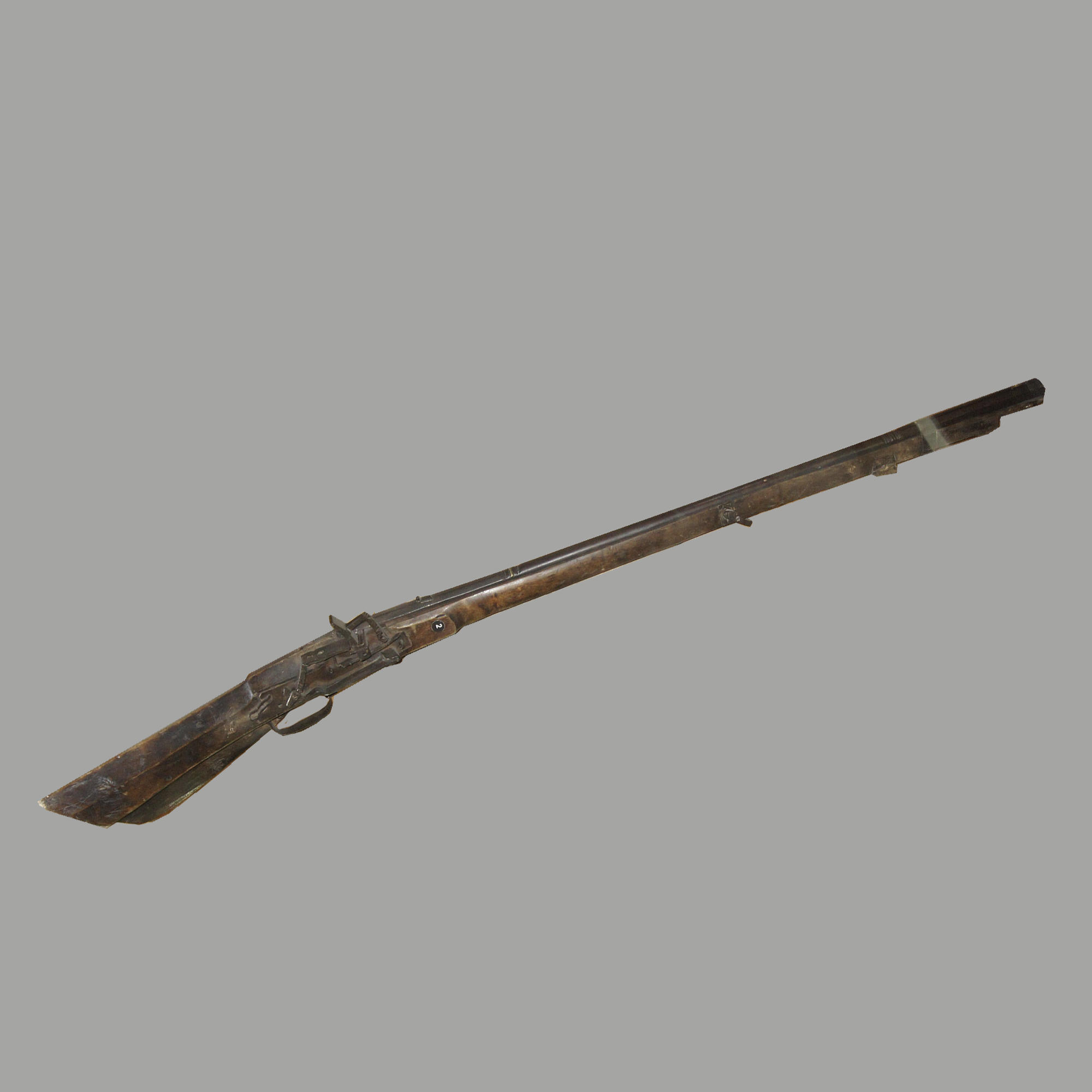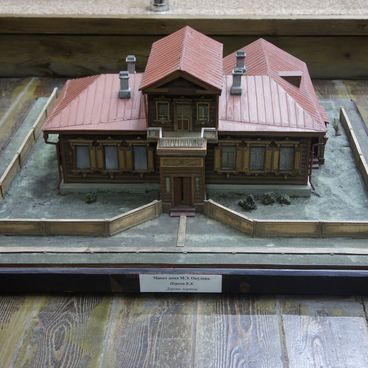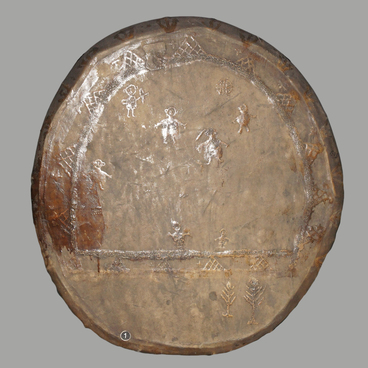Flintlock gun was a firearm that was used by the Tsar’s soldiers throughout the 17th century. It had a flint lock, where the ignition occurred with sparks. Flintlock was set into motion by shock, when the trigger with flint hit the steel flint plate, or the anvil. The caliber of such a gun could range from 17.5 to 21.5 millimeters, and it weighed from 4.0 to 5.6 kilograms. The sighting range of a flintlock gun when shooting at a freestanding person ranged from 40 to 100 meters, or, when shooting at a group of people, it ranged from 100 to 200 meters. There were two types of flintlock guns: smooth-bore and rifled. The smooth-bore guns had a rate of 2 to 4 shots per minute, while the rifled ones fired 1 round per minute. In the mid-19th century, flintlock guns were replaced with guns and rifles with capsule locks.
A flintlock mechanism (or a flintlock) was a device for igniting gunpowder charge in a flint gun. To prepare a flintlock for a shot, shooter had to load the gun, that is load the powder charge and bullet into the barrel, then put the trigger in half bent position; open the lid of the flashpan; clean the flash hole (if necessary); pour a small portion of gunpowder on the flashpan; close the lid; and put the trigger in full bent position.
Each soldier liable to government service (called a foot or cavalry Cossack at the time) had to measure the required portion of gunpowder by himself, and stock up on lead bullets. The official documents of 17th century mentioned such guns as arquebuses. There were “big arquebuses” or cannon, and actual arquebuses or guns. In the first quarter of the 18th century, somewhat more advanced fusils replaced the traditional arquebuses, conserving the same principle of operation. Frequent misfires were a significant disadvantage of flintlock weapons. Abraded or poorly fixed flints, worn flints, or clogged flash hole were among common causes of misfire. Although the seed powder on the flashpan was protected by a spring-loaded lid, it still dampened and deteriorated over time. Therefore, it was impossible to keep the weapon charged for a long time, and the powder on the flashpan had to be changed periodically.
Fundamental changes occurred only in the 19th century, as capsule rifles were invented and introduced.
A flintlock mechanism (or a flintlock) was a device for igniting gunpowder charge in a flint gun. To prepare a flintlock for a shot, shooter had to load the gun, that is load the powder charge and bullet into the barrel, then put the trigger in half bent position; open the lid of the flashpan; clean the flash hole (if necessary); pour a small portion of gunpowder on the flashpan; close the lid; and put the trigger in full bent position.
Each soldier liable to government service (called a foot or cavalry Cossack at the time) had to measure the required portion of gunpowder by himself, and stock up on lead bullets. The official documents of 17th century mentioned such guns as arquebuses. There were “big arquebuses” or cannon, and actual arquebuses or guns. In the first quarter of the 18th century, somewhat more advanced fusils replaced the traditional arquebuses, conserving the same principle of operation. Frequent misfires were a significant disadvantage of flintlock weapons. Abraded or poorly fixed flints, worn flints, or clogged flash hole were among common causes of misfire. Although the seed powder on the flashpan was protected by a spring-loaded lid, it still dampened and deteriorated over time. Therefore, it was impossible to keep the weapon charged for a long time, and the powder on the flashpan had to be changed periodically.
Fundamental changes occurred only in the 19th century, as capsule rifles were invented and introduced.


